A Guide to South Indian Wedding Traditions and Customs
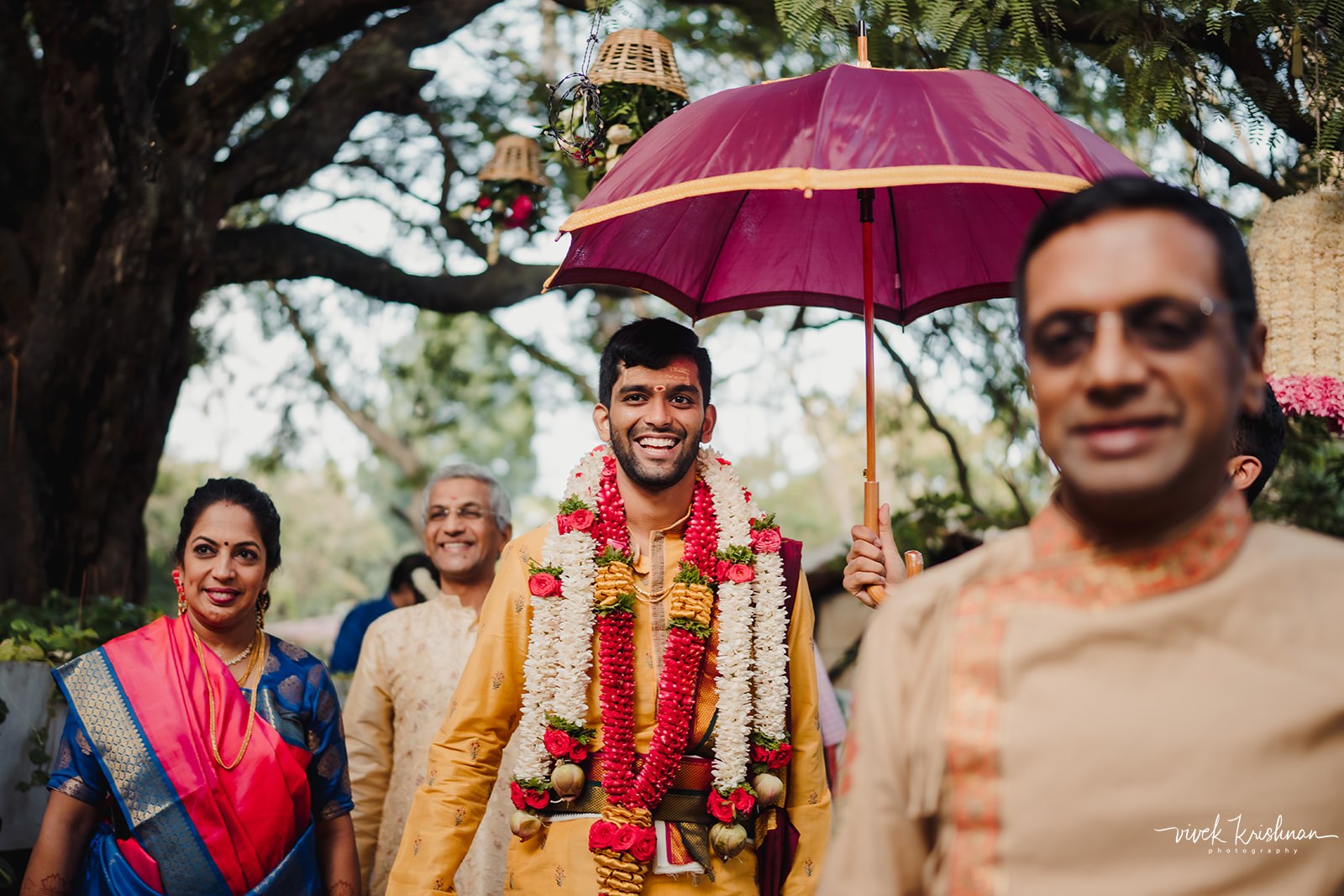
Introduction to South Indian Weddings
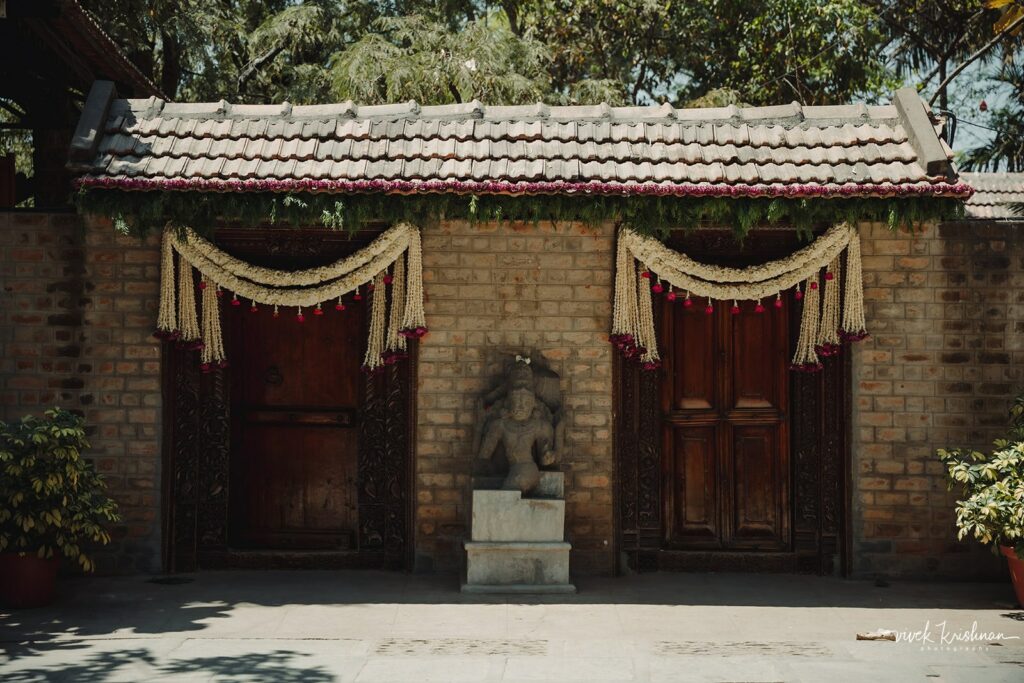
Bright silks with intricate designs, gold jewelry that tell stories, the smell of jasmine flowers, and the harmonious sounds of the Nadaswara and Mrudanga along with the chants of the Purohits are what South Indian weddings are made of. Largely differing in customs and traditions from North Indian weddings, the ceremonies that take place in the southern part of the Deccan Plateau have been influenced by the region’s history with the Vijayanagara Empire, the Pandya Dynasty, and the Chola Dynasty. The religion and spirituality associated with the people of South India have also played an integral part in how weddings are performed in South India.
Pre-Wedding Rituals
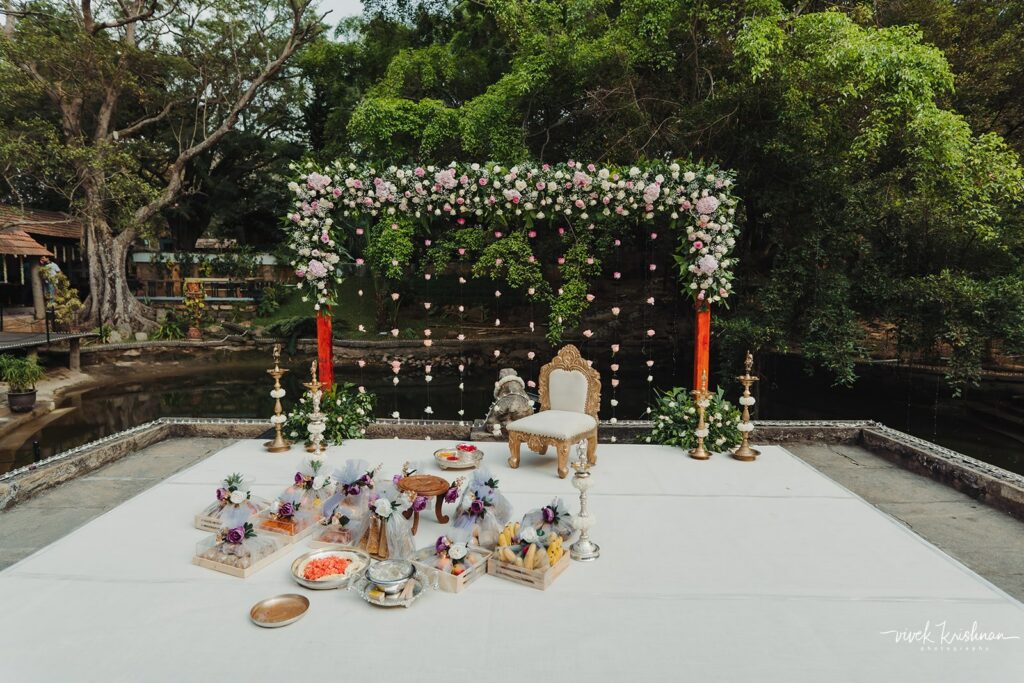
While popular ceremonies like Mehendi and Haldi take over a large part of the pre-wedding rituals of North Indian weddings, these hold lesser importance down South. Though the main wedding takes place over a span of two days, the pre-wedding rituals take up anywhere close to two days to a week before the main day. The commencement of all ceremonies always begins with a pooja performed to the family deity or even visits to the temple of the family deity. In Karnataka, Tamil Nadu, Andhra Pradesh, and Telangana, the indication of a wedding in a household is the raising of a temporary Mantap/Chappra made of coconut leaves decorated with flowers. This marks the auspicious beginning of a wedding in that house.
Most other pre-wedding rituals in South India are dedicated to honoring the Gods that the family worships (Devarasamaradhane), asking for blessings from ancestors (Naandi), celebrating the groom and his family (Varapuja/Pellikoduku) and the bride and her family (Pellikuthuru). Over time, due to the influence of Bollywood, Haldi, Mehendi, and Sangeet have also transitioned into being important pre-wedding rituals in South India.
South Indian Wedding Decorations
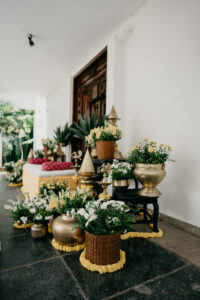
Vibrant colors of yellow, orange, and red, often mixed with variations of green are commonly considered festive colors in the South of India. The South Indian stage decorations draw a lot of inspiration from the temples in the region. The arches, the pillars, and the mantaps of the century-old temples play a significant role in the design of wedding decor.
Commonly seen flowers are marigolds, roses, lotus, and multiple types of jasmines. Banana leaves and mango leaves are used to complement these flowers, as well as add an auspicious touch to the décor. Elements like brass lamps, bells, and carved artifacts are often found as aesthetic additions to the overall theme of South Indian wedding decorations.
Traditional Rituals and Ceremonies
From Kannada Brahmin rituals, Iyer and Iyengar rituals, Gowda wedding traditions, and rituals of Nair’s, Shetty’s, Menon’s, Pisharody’s, Reddy’s, and so on, all the wedding ceremonies overlap in terms of customs and the meaning they hold. For example, the ritual of tying a knot is common in all cultures but is performed differently in each culture, with a different ceremony music (Nadaswara or Chenda Melam). The rituals preceding and succeeding the tying of the knot are different. Some interesting traditions and customs from the South Indian ceremony list can be found below:
Kashi Yatra:
According to the Vedas, the ancient Hindu scriptures, a man’s life is divided into four stages: Brahmacharya (Bachelor period), Grihastha (Householder period), Vanaprastha (Retirement period), and Sanyasa (Renunciation period). Kashi Yatra, the Brahmin wedding ritual, marks the phase of a man transitioning from a Bachelor’s life to the life of a Householder. In this tradition, the groom claims to leave all his worldly pleasures and embark on a spiritual journey to the Himalayas (Kashi), and the bride’s father intervenes and persuades him to reconsider his decision. This is one of the first rituals performed on the day of the wedding, and a great ice-breaker as all the family members participate in this dramatic ordeal.
Oonjal/Swing Ceremony:
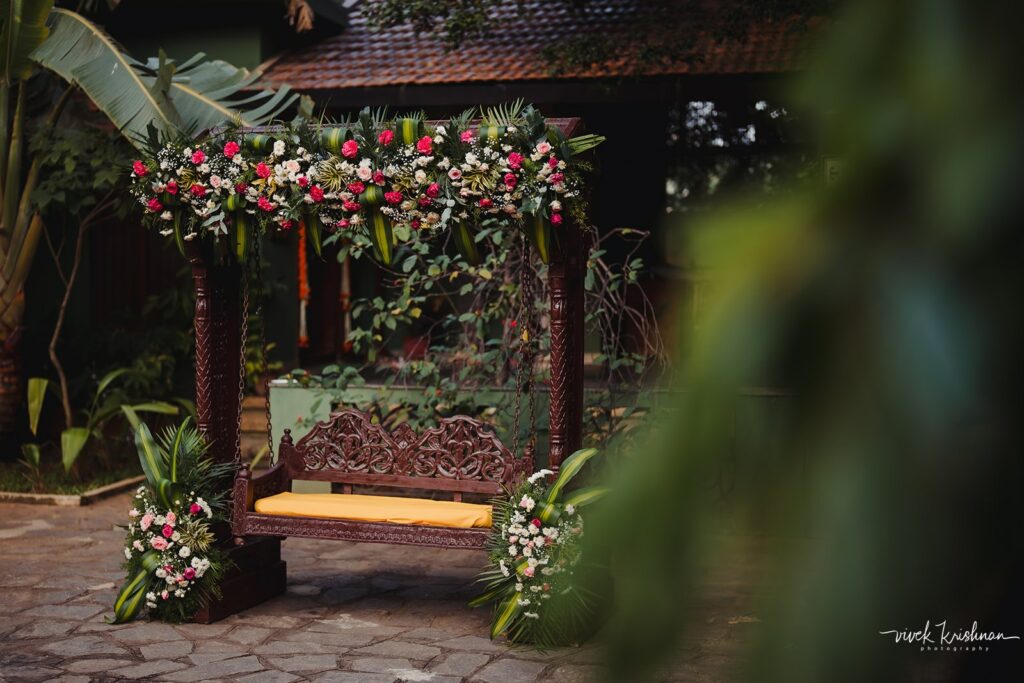
A ritual filled with melodies, as the families gather around the bride and groom seated on a swing and sing, the oonjal ceremony is also a Brahmin wedding ritual. This ceremony holds a cultural significance of familial support towards the couple as they embark upon this new journey! The ups and downs of the swing symbolize life and its uncertainties, and how the couple should sail through these together with the support of the family.
Kanyaadana:
An extremely emotional ritual followed in most South Indian weddings, Kanyadaana, translates to ‘giving of the bride’. In this ceremony the bride’s father places the hands of the bride into the hands of the groom, asking him to take care of her as he did until now. This tradition signifies the bride’s transition from her maternal house to her marital home.
Saptapadi:
A South Indian version of Saath Phere, Saptapadi, meaning seven steps, is a tradition that involves the bride and the groom taking seven steps together, each one symbolizing a vow.
- A vow towards nourishment and support
- A vow of growth and understanding
- A vow toward prosperity
- A vow of harmony
- A vow towards family and children
- A vow for all joys and sorrows
- A vow to be lifelong companions
Mangalaya Dharane/ Mangalsutra Dharanam/Thali kettu
Mangalya/Mangalsutra/Thaali is a necklace, initially tied as a thread by the groom around the bride’s neck. This piece of jewelry is a symbol of a woman’s marital status in South India. Each of the three knots of the mangalsutra holds significance. Of the three knots, two are tied by the groom, one knot signifying the couple’s commitment to each other, and one more signifies the couple’s commitment to their families. The third knot is tied by the groom’s sister or family member, signifying the family’s commitment to the union of the couple.
Banana Leaf Meal: Wedding Lunch/Sadya
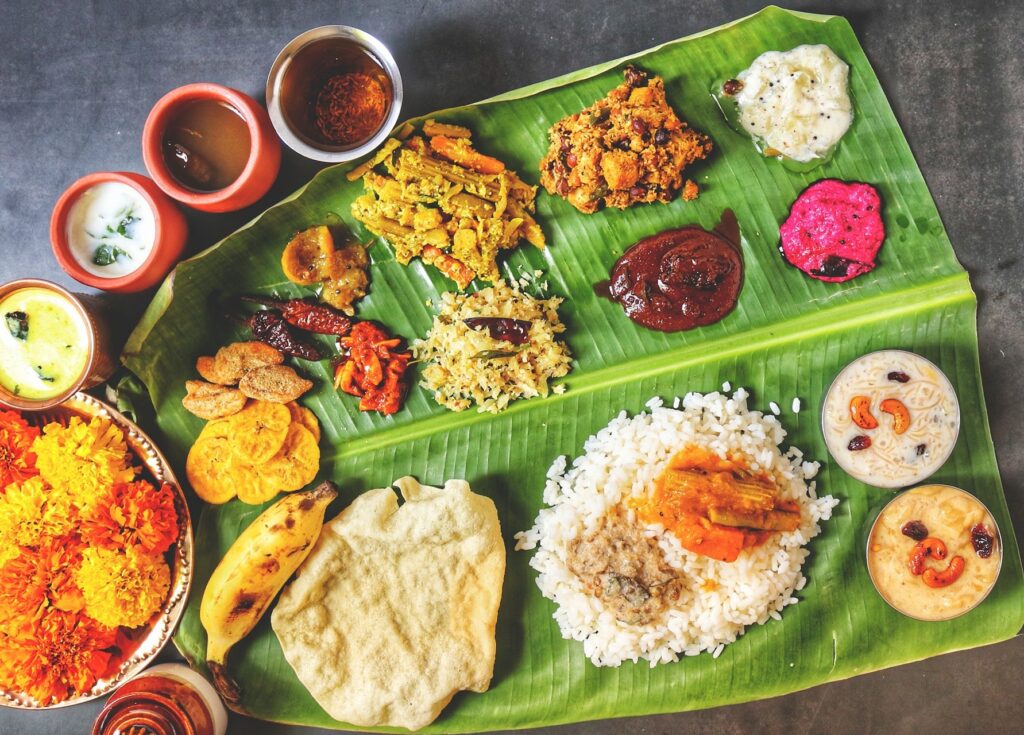
The most anticipated event at the wedding for the guests is always the lunch served on the main wedding day. Unlike the majority of North Indian weddings that take place at night, most South Indian weddings occur in the wee hours of the morning. A traditional lunch is served on a banana leaf, consisting of various delicacies, planned based on the season of the wedding as well. This colorful platter is pleasing both to the eyes and the stomach alike!
Reception
A more formal ceremony conducted either on the evening before or the evening of the main wedding, Reception is a non-traditional event to allow for the guests to meet the couple in person, wish and bless them. As most of the other rituals and ceremonies have the couple occupied throughout, this event keeps them free and makes it easy for the couple to thank the guests for their attendance and take a photograph with them to mark the celebration.
South India is an extremely diverse region and has a mix of languages and cultures that are similar yet different. Certain traditions that are hundreds of years old are still followed as step-by-step rituals as an ode to the roots of our ancestors. Though the focus on tradition, and customs are common in most Kannada rituals, Tamil rituals, Telugu rituals, and Malayalee rituals, the occurrence of cross-cultural weddings have now given way to new practices.
As we conclude our journey through the captivating South Indian wedding traditions, we’re inspired by the cultural richness and enduring beauty of these ceremonies. At The Tales of Tradition, we specialize in blending authentic traditions with modern sophistication.
Let us weave your unique love story into a wedding tale filled with unforgettable moments. Choose The Tales of Tradition for your South Indian wedding and embark on a journey where every ritual becomes a cherished memory. Ready to start your wedding adventure?

